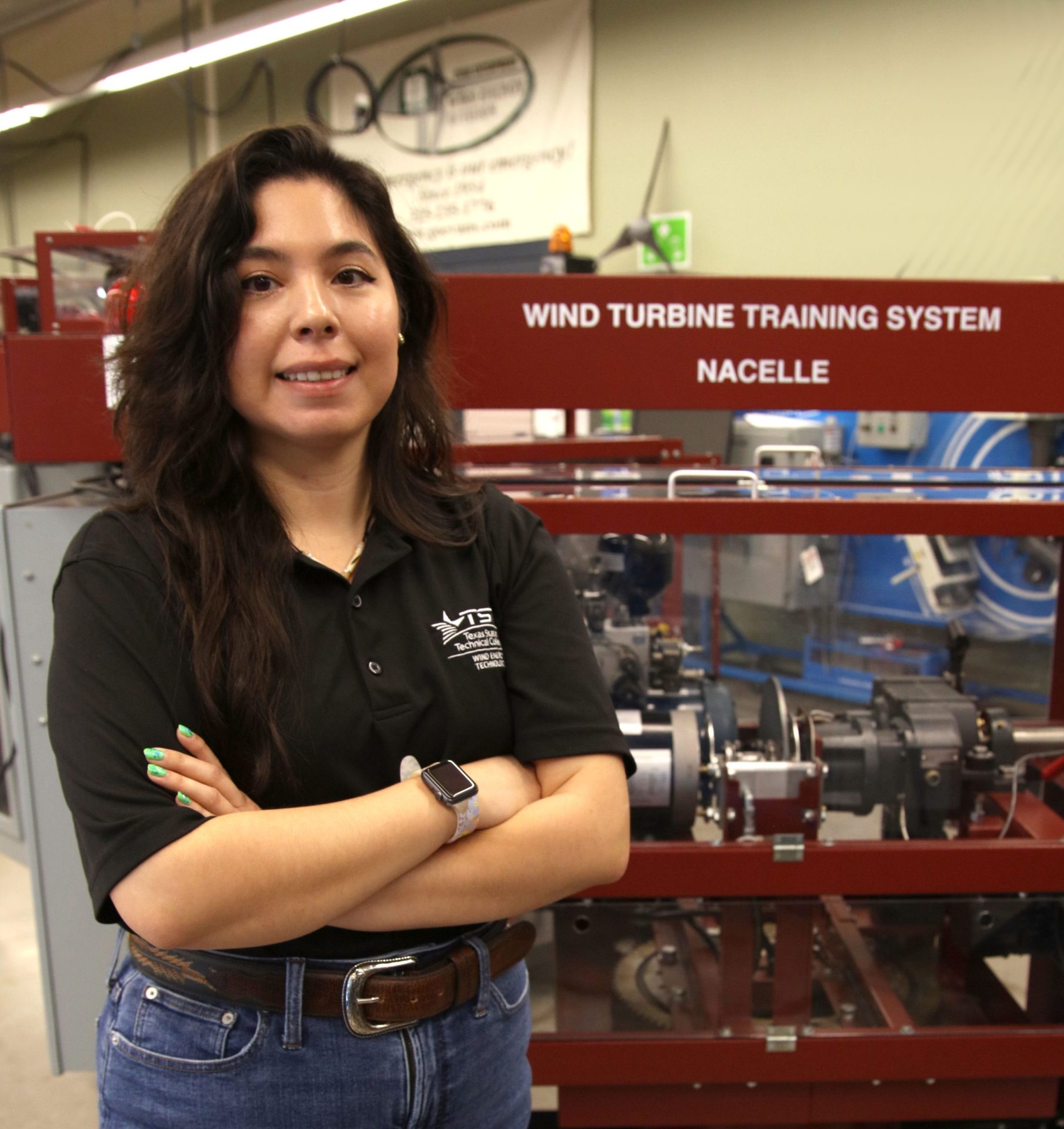HARLINGEN — The purpose of wind turbines is to turn wind into electricity to power homes and businesses.
The process of how a wind turbine operates, who maintains the tall structure and how it is built caught the interest of U.S. Navy veteran Jessica Alaniz.

It inspired her to pursue an Associate of Applied Science degree in Wind Energy Technology at Texas State Technical College’s Harlingen campus, where she is a lab assistant in the same program.
“A cousin told me stories about her experience when she used to build wind turbines,” she said. “That, and driving with my son past the fields of wind turbines in Bayview, made me curious. I performed an online search and I noticed TSTC’s wind energy program. So I enrolled. As for the lab assistant job, the duties I did in the Navy as a Boatswain’s Mate, such as electrical, mechanical and preventative maintenance, coincided with the position.”
Alaniz said her first semester in the program has been riveting.
“Everything has been hands-on training and that’s my best way of learning,” she said. “I have enjoyed the training in the Direct Current Circuits class because I did similar work in the Navy. An example is learning about the red boards. We build circuits on it and measure the voltage that’s intended to troubleshoot a circuit.”
The Los Fresnos resident said the instructors have enhanced her knowledge — especially as a lab assistant.
“I’ve never climbed before and the instructors have shared stories and shown me pictures of their industry experience,” she said. “It was a great insight into their expertise. Regardless if it’s a topic that I don’t understand, they help me to comprehend it.”
She added the most interesting aspect she has learned about the wind energy industry reflects safety.
“This pertains to how a turbine works, how it functions, how it’s built, what’s the operating procedure, and the maintenance that goes into it,” she said. “My son used to ask me questions about turbines and now I can explain how they work.”
Alaniz said her future plans are to become an instructor.
“I would like to transition to a job as a teaching lab assistant in the program, when it becomes available,” she said. “After I complete the program, I look forward to adding a new credential of an Associate of Applied Science degree in Wind Energy Technology to my portfolio, where I also have earned two Bachelor of Science degrees in Biology and Kinesiology from the University of Texas at San Antonio in 2020.”
Patrick Zoerner, TSTC’s Wind Energy Technology program director in Harlingen, said Alaniz goes above and beyond as a student and as a representative of his staff.
“As a student, Jessica completes her work and helps fellow classmates progress in their path of education,” he said. “As a lab assistant, she performs her job proficiently, is goal-oriented and organized. Her ambitious nature has allowed her to flourish because she’s not afraid to get dirty.”
The job outlook for the wind energy industry is bright. According to onetonline.org, the need for wind turbine service technicians in Texas is forecast to increase 102% from 2020 to 2030. The average annual salary for a technician in Texas is $51,560, according to the website.
TSTC’s Wind Energy Technology program offers an Associate of Applied Science degree and a certificate of completion at the Harlingen and Sweetwater campuses.
For more information about TSTC, visit tstc.edu.



